

Parametric Conditions
by
Priscilla Alexander
This write-up is for students who are learning about the effects of integers on the graphs formed by parametric equations.
If given

What happens when a and b are the same positive integers
What happens when a is a positive integer and b is a negative integer (and vica versa)
What happens when a and b are the same negative integers
What happens when a and b are different integers, where

When a and b are the same a circle is formed.
When a and b are the same number but one is negative and the other is positive, a circle is still formed.
See Graph

In general when a and b are the same integers between -3 and 3 a circle will always appear that has a radius of one. This happens because the ratio of a/b in this case reduces to one.
When a and b are different integers, say a is two and b is one, then a rotated parabola is formed.

In general, when the ratio of a/b reduces to two a rotated parabola will always be formed. For example, if a equals 4 and b equals 2 then the rotated parabola will be formed.
When a and b are different integers, say a is one and b is two, then a bow tie looking image appears.

In general when the ratio of a/b reduces to 1/2 this image will always be formed.
When a and b are different integers, say a is equal to 2 and b is equal to 3, the image below is formed.
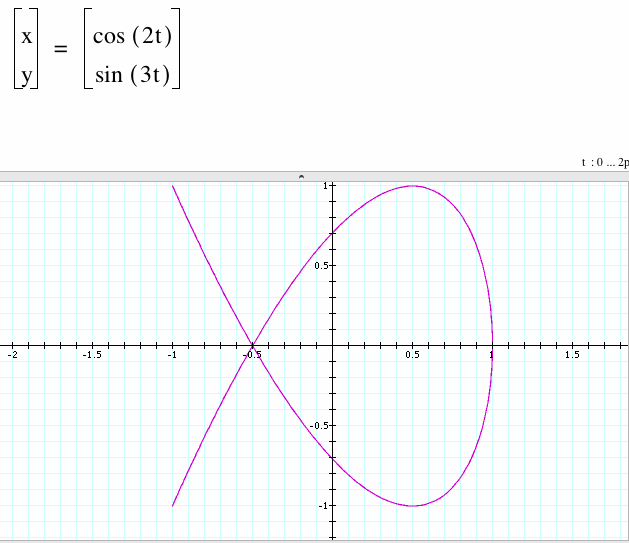
In general when the ratio of a/b reduces to 2/3 the image will always appear like the above.
When a and b are different integers, say a is equal to 1 and b is equal to 3, then an image that is reflected about the x-axis appears.

In general, when the ratio a/b reduces to 1/3, then the above image appears.
When a is equal to 3 and b is equal 1, then the graph is the same as a equals 1 and b equals 3, but is reflected about the y-axis.
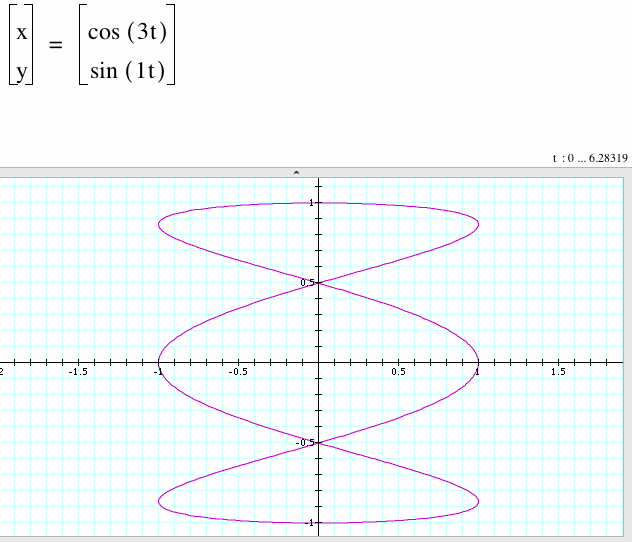
In general this happens for all integers that are odd when a or b is one and the other interger is not one. For example, if a is equal to 5 and b is equal to 1, then the graph of a is equal to 1 and b is equal to five will be reflected on the opposite axis.
When a is an even integer and b is one, then the amplitude of the graph will always be
![]()
 |
 |
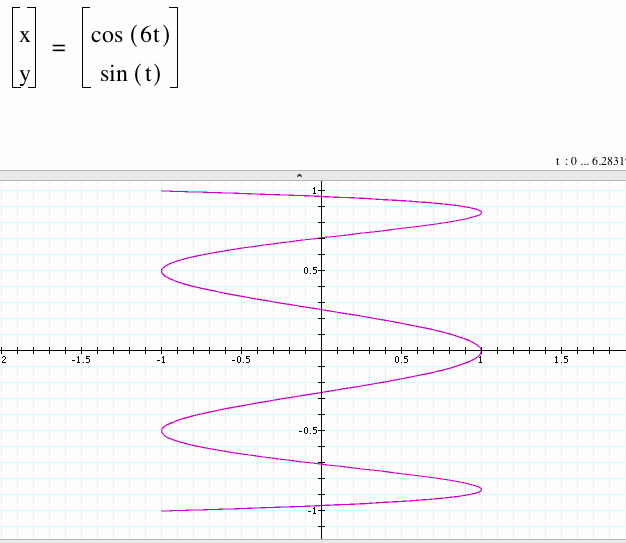 |
 |
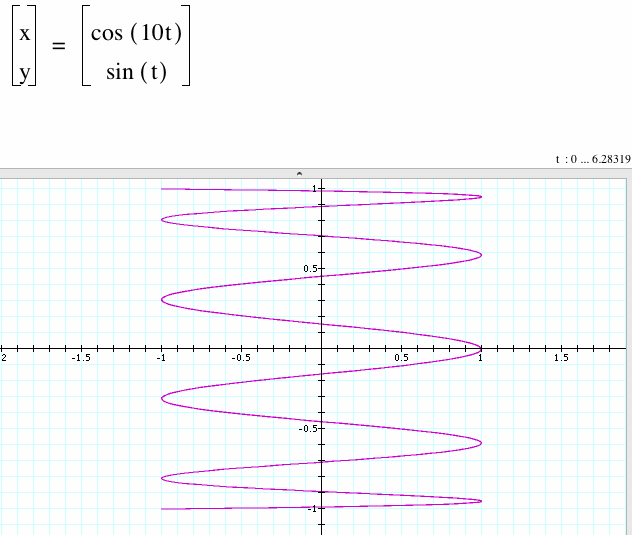 |
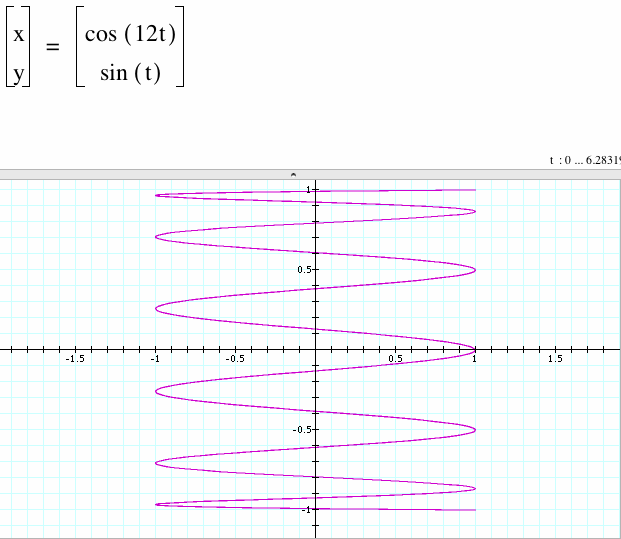 |
In conclusion, integers make the graphs of parametric equations act in many ways. Some of the graphs are reflected or rotated. The ratio of a and b also have an effort on the graph. In addition, odd and even integers make the graph behave in a different way then the rest.